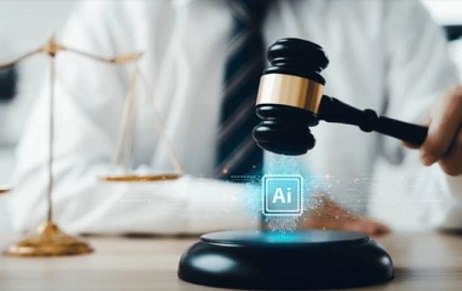Any successful café, restaurant, or retail establishment's environment is greatly influenced by its music. It…
Curious Case of Corporate Viel in Revocation Petition
This case pertains to a suit filed by Galatea Ltd. & Anr (Petitioners), against Diyora & Bhanderi Corporation (Defendants) and thirteen other defendants, for infringing of its patent IN 271425 (suit patent) for a ‘device which eliminates presence of gas bubbles from the immersion medium”. Along with the suit, the plaintiffs filed an application under order 39 Rule 1 & 2 of Civil Procedure Code, seeking interim injunction restraining the latter from using, selling or offering to sell the patented device, which was denied by the district court Vadodra. Later, it was appealed by the Plaintiff in High Court that appointed a local commissioner to make a report on investigation held in the defendants’ premises and remanded the case back to the district court.
The defendants filed written statement denying all the allegations made by plaintiff, and also filed a counter claim under section 64 (1) (e) and (f) of Patent Act, 1970 for revocation of the patent in the High Court of Ahmedabad due to lack of novelty[1] and inventive steps[2]. The proviso to section 104, Patent Act, 1970, necessitates the transfer of the case to the High Court.
The issue that the Plaintiff raised was that revocation by means of counter-claim filed by Defendant Nos. 4 & 5 before High Court is not maintainable as revocation petition has already been filed by Defendant no. 3 before the IPAB, being the same entity as Partners in Defendant no. 3 are directors in Defendant Nos. 4 and 5.
PLAINTIFF’S CONTENTION
Plaintiff relied on the case of Saurabh Exports v. Blaze Finance & Credits (P.) Ltd[3], where the Defendants entered into an agreement with the Plaintiff under which the Plaintiff made a deposit of 15 lakhs in the company, which the defendants failed to pay and all the defendants denied their liability to repay the same. Hence, the court lifted up the corporate veil on the basis that, theDefendants’companieswere a family arrangement made to defraud the Plaintiff under the cloak of a corporate entity. This makes the company and the directors liable. Referring to this case, the Plaintiff claimed that since partners and directors of Defendant Nos. 3, 4, and 5 are same, corporate veil of Defendant nos. 4 and 5 should be lifted and counterclaim should not be maintainable as it would lead to same relief of patent invalidation being asked through two judicial entities (IPAB and High Court). Thus, the Plaintiff argued that Defendant entities are not separate but are alter-egos of each other and that multiple entities of Defendants are created to conceal improper activities conducted by them. Where the corporate charter is employed for the purpose of committing illegality or for defrauding others, the court would ignore the corporate character and will look at the reality behind the corporate veil so as to enable it to pass appropriate orders to do justice between the parties concerned.[4]
Plaintiff referred to the case of Dr. Alloy Wobben & Ors. V. Yogesh Mehra & Ors,[5]where the court held that the use of the word “or” in Section 64(1) demonstrates more than one remedies but that cannot be simultaneously used.Further, it was argued by the plaintiffs that since defendant no. 3 have already filed a revocation before IPAB, the revocation petition filed by Def. Nos. 4 and 5 are not sustainable as all of them are single entity. Hence, the subsequent revocation filed before the High Court must be stopped as the Defendants cannot avail dual remedy for the same cause of action, thereby making the counter-claim non-sustainable.
DEFENDANT’S CONTENTION
Defendants first highlighted a principle of Patent Law that if validity of a patent is challenged, i.e. revocation is pending for the patent suit, then no injunction can be granted.[6] Thus, plaintiff’s interim application under order 39 rule 1 & 2 of CPC, for seeking ex- parte injunction restraining the defendants from manufacturing, selling, offering for sale any infringed device must be rejected.
Defendants submitted their arguments on two grounds:
- Defendants asserted that Defendant nos. 3, 4, 5 are different entities.Defendant no. 4 and defendant no. 3 are completely different entities dealing with different line of business, although partners and directors are common. They explained,“Each company is a separate and distinct legal entity and the mere fact that two companies have common shareholders or common Board of Directors, will not make the two companies a single entity. Nor will existence of common shareholders or Directors lead to an inference that one company will be bound by the acts of the other.”[7] With regard to Defendant no. 5, it is totally a different entity as it is Private Ltd Co, incorporated under Company Act, 1956 comprising of different partners. The plaintiff has itself involved defendants 4 and 5 in the present suit, resulting them to have locus-standi in the case to file a revocation petition by means of a counter-claim according to section 64 of Patent Act, 1970.
- Corporate veil is applicable only in certain cases such as Tax evasion, fraud, enemy character, ultra vires Act, and act against public interest, negligent activities or company avoiding legal obligations. They further emphasized that corporate veil is a rule, and lifting of corporate veil is an exception that can be done only on limited circumstances. Corporate veil should be applied only in scenarios where it is evident that company was a mere camouflage or sham deliberately created by persons exercising control over the said company for the purpose of avoiding liability.[8]Thus, lifting of corporate veil is not valid in the present case as the defendant’s business is a bona fide company incorporated having a separate juristic entity.
JUDGEMENT:
Consequently, the District court of Vadodra, decided the whole case by discussing the following two issues.
Issue 1: Whether defendant no. 3, 4 and5 are different entities or not?
Defendant no. 3 is a partnership firm, and all partners of defendant no. 3 are the directors of defendant no. 4, which is a private Ltd. Company. Thus, these two entity are not independent of each other, rather they are an alter – ego of each other. Thus, the counter claim with regard to defendant no. 4 is not maintainable. However, defendant no.5 is a Private Limited Company incorporated under Company Act, 1956, having different directors. Hence, it is completely a separate entity from defendant 3 and 4.
Issue 2: Whether the ‘Lifting of corporate veil’ applicable on the present case?
The court held that corporate veil cannot be lifted and in case of defendant no. 5, no case has been raised by the plaintiff where defendant no. 5 falls under the scope ‘corporate veil’ as corporate veil can be lifted only in certain cases as mentioned by the defendants by referring to plethora of cases.[9]The plaintiff could not put the defendant company in fissures of those specific cases. The court listed out following six legal positions where the corporate veil can be lifted:[10]
- ownership and control of a company were out enough to justify piercing the corporate veil;
- the Court cannot pierce the corporate veil, even in the absence of third party interests in the company, merely because it is thought to be necessary in the interests of justice;
- the corporate veil can be pierced only if there is some impropriety;
- the impropriety in question must be linked to the use of the company structure to avoid or conceal liability;
- to justify piercing the corporate veil, there must be both control of the company by the wrongdoer (s) and impropriety, that is use or misuse of the company by them as a device or façade to conceal their wrongdoing; and
- the company may be a ‘façade’ even though it was not originally incorporated with any deceptive intent, provided that it is being used for the purpose of deception at the time of the relevant transactions.
Thereby, on discussing the above issues, the Hon’ble Court dismissed the counter-claim of defendant no. 4 for the reason that it is the same entity as of defendant no.3. But the court accepted the counter-claim submitted by defendant no.5 taking it as a separate entity from Defendant nos. 3 and 4. Thus, the court ordered for transfer of the case to High Court of Gujarat according to Section 104 of Patent Act.
[1] Section 64 (1) (e) of the Patent Act : that the invention so far as claimed in any claim of the complete specification is not new, having regard to what was publicly known or publicly used in India before the priority date of the claim or to what was published in India or elsewhere in any of the, documents referred to in section 13:
[2]Section 64 (1) (e) of the Patent Act : that the invention so far as claimed in any claim of the complete specification is obvious or does not involve any inventive step, having regard to what was publicly known or publicly used in India or what was published in India or elsewhere before the priority date of the claim:
[3] [2006] 133 Comp. Cas. 495
[4]Singer India v. Chander Mohan Chadha[2004] 122 Comp. Cas. 468 (SC)
[5][(2014) 15 SCC 360]
[6] TVS Motor Company Limited v. Bajaj Auto Limited, 2009 (40) PTC 689 (Mad); Standipack Private Limited v. Oswal Trading Co. Ltd., 1999 (19) PTC 479.
[7]Indowind Energy Ltd vs. Wescare (I) Ltd.& Anr, AIR 2010 SC 1793
[8] Balwant Rai Salulja V/s. Air India Ltd., AIR 2015 SC 375
[9]Saurabh Exports V/s. Blaze Finlease and Credits Pvt. Ltd. (supra); Chander Mohan Chadha and Ors.,(supra), Delhi Development Authority; Indowind Energy Ltd. V/s. Wescare; Balwant Rai Salulja V/s. Air India Ltd.(supra)
[10]Balwant Rai Salulja V/s. Air India Ltd.,AIR 2015 SC 375



